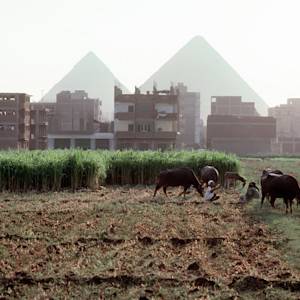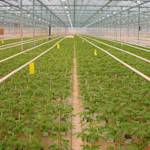World's most efficient greenhouse agriculture in the Netherlands
2017 CE • Netherlands
Almost two decades ago, the Dutch made a national commitment to sustainable agriculture . . . “Twice as much food using half as many resources.” Since 2000... farmers have reduced dependence on water for key crops by as much as 90 percent. They’ve almost completely eliminated the use of chemical pesticides on plants in greenhouses, and since 2009 Dutch poultry and livestock producers have cut their use of antibiotics by as much as 60 percent . . . The Netherlands is a small, densely populated country . . . It’s bereft of almost every resource long thought to be necessary for large-scale agriculture. Yet it’s the globe’s number two exporter of food as measured by value, second only to the United States, which has 270 times its landmass. How on Earth have the Dutch done it? . . . By using the world’s most efficient agricultural technologies . . . [and] doing more with less . . . Dutch horticulture relies heavily on greenhouses, allowing farmers to closely control growing conditions and use fewer resources like water and fertilizer . . . some of them covering 175 acres . . . These climate-controlled farms enable a country located a scant thousand miles from the Arctic Circle to be a global leader in exports of a fair-weather fruit: the tomato. The Dutch are also the world’s top exporter of potatoes and onions and the second largest exporter of vegetables overall in terms of value. More than a third of all global trade in vegetable seeds originates in the Netherlands." "The great indoors provides optimal growing conditions for lettuce and other leafy greens at Siberia B.V. [a major greenhouse farming facility in the Netherlands]. Each acre in the greenhouse yields as much lettuce as 10 outdoor acres and cuts the need for chemicals by 97 percent."
Frank Viviano, "This Tiny Country Feeds the World," National Geographic, September 2017.
Image: Goldlocki, CC BY-SA 3.0, via Wikimedia Commons


Learn about Maya Lin’s fifth and final memorial: a multi-platform science based artwork that presents an ecological history of our world - past, present, and future.

Discover ecological histories and stories of former abundance, loss, and recovery on the map of memory.

Learn how we can reduce our emissions and protect and restore species and habitats – around the world.

See how art can help us rethink the problems we face, and give us hope that each one of us can make a difference.

Help make a global memorial something personal and close to home. Share your stories of the natural world.


